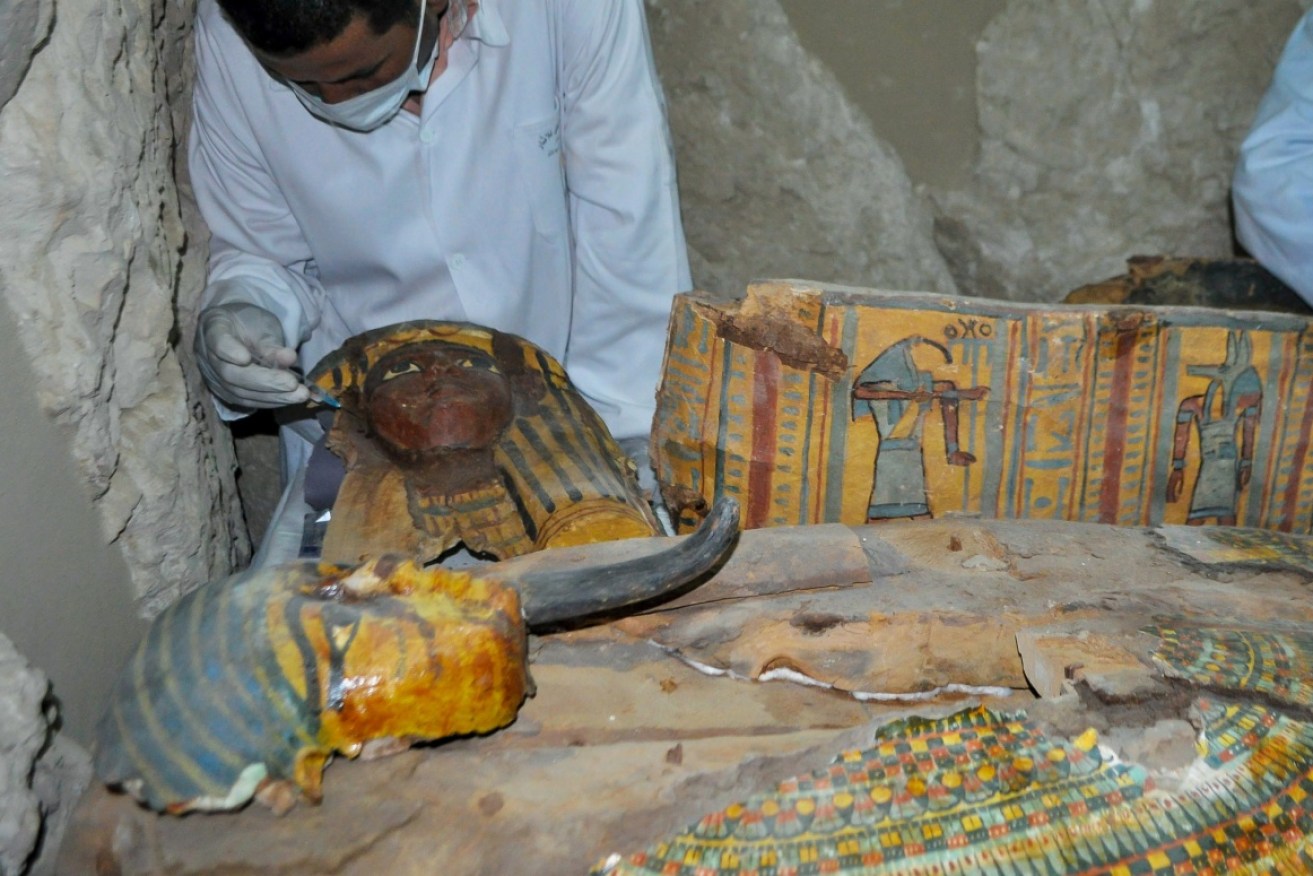Egypt archaeologists discover 3500-year-old tomb


Egyptian archaeologists document the content of a recently discovered tomb. Photo: Getty
Egyptian archaeologists have unearthed several mummies and hundreds of funerary statues dating back more than 3000 years in a major new discovery.
The tomb is the latest in a series of significant discoveries of ancient relics made by an Egyptian archaeological mission working in the Draa Abul Nagaa necropolis near the Nile city of Luxor.
The antiquities ministry on Tuesday local time said the tomb was built for a nobleman named Userhat who worked as the city judge during the New Kingdom period, from roughly 1500 BC to 1000 BC.
It consists of an open court leading into a rectangular hall, a corridor and inner chamber, the Egyptian Ministry of Antiquities said on Tuesday.
In one of the rooms in the tomb, archaeologists found a collection of figurines, wooden masks and the handle of a sarcophagus lid.
Excavation is continuing in a second chamber.
Earlier this year, Swedish archaeologists discovered 12 ancient Egyptian cemeteries near the southern city of Aswan that date back almost 3500 years.
In March, Egyptian archeologists unearthed an eight-metre statue in a Cairo slum that is believed to be of King Psammetich I, who ruled from 664 BC to 610 BC.
Hisham El Demery, chief of Egypt’s Tourism Development Authority, said he hopes the new discoveries would revive tourism, which has suffered greatly since the political unrest that toppled former president Hosni Mubarak in 2011.
“These discoveries are positive news from Egypt’s tourism industry, which is something we all really need,” he said.
– With agencies








